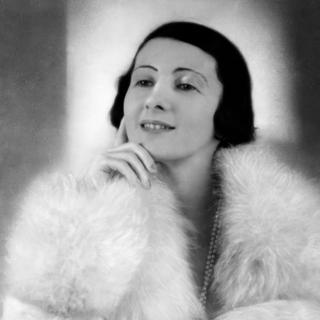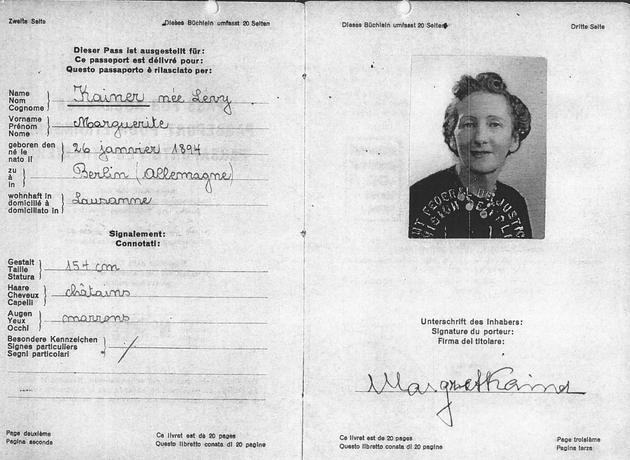


The contested estate of Switzerland's millionaire, Margret Kainer
InvestigationThe estate of Margret Kainer, who died in France in 1968, is at the heart of a dispute between her distant heirs and the local authorities, who are accused of stealing her fortune. Also at stake are the masterpieces she was once robbed of by the Nazis.
In her passport photo, Margret Kainer smiles shyly at the photographer. On the left-hand page, it reads: "Kainer, née Lévy, Marguerite, born January 26, 1894 in Berlin (Germany), 157 centimeters, brown hair, brown eyes." The young woman is German, but the document, dated 1946, is Swiss and written in the three languages of the Swiss Confederation. Another period image shows her posing, chin resting in the palm of her right hand. Her Louise Brooks bob-style haircut and the fur on her shoulders make her look like a Hollywood star. In fact, she was rich, very rich: When he died in 1928, her father Norbert Lévy, a Berlin businessman and art collector, bequeathed his fortune to her.

Threatened by the Nazis' rise to power because she was Jewish, the young woman left Germany with her husband Ludwig in 1933. They took refuge first in France, then, from 1942, in Pully, near Lausanne, Switzerland. Four years later, they obtained a Nansen passport, named after the high commissioner behind the document issued in Europe to refugees who were victims of persecution.
After the war, they returned to Paris. Ludwig Kainer (1885-1967), a painter and fashion designer, worked in the film industry, creating sets and costumes. The couple lived in the northwestern suburb of Neuilly-sur-Seine, where they counted Jean Cocteau and Josephine Baker among their social circle. They regularly extended their residence permits but promised the Swiss authorities they would settle permanently in the Swiss Confederation in order to keep their Nansen passports. They never did. Margret only declared an address later in life to ensure the document's renewal.

Then came 1968, the year she died at the age of 74, a widow with no children or identified heirs. By court order, her fortune, estimated at around 17 million Swiss francs, was divided into three: 6.3 million francs for the municipality of Pully (near Lausanne), where she was registered at the time of her death, although she no longer lived there; 6.3 million for the canton of Vaud, to which the chic city of Pully belongs; and 5 million for the Norbert Stiftung, a foundation intended to preserve the memory of her father. According to an official document from the municipality of Pully, dated March 30, 2005, and unearthed by Le Monde, Norbert Stiftung had previously "filed a claim on the entire estate of the late Margret Kainer," but an agreement was eventually reached between the three entities. No one had any objections.
'Complicity with the regime'
You have 76.5% of this article left to read. The rest is for subscribers only.
